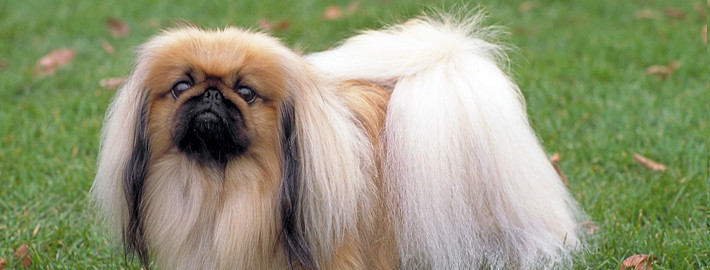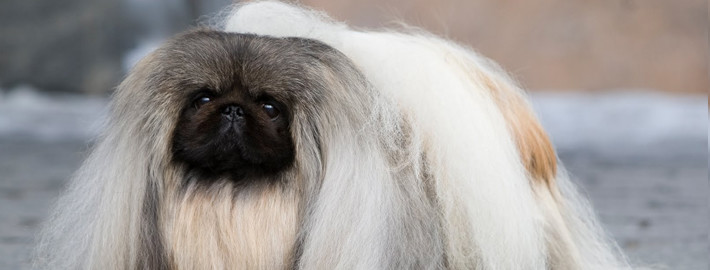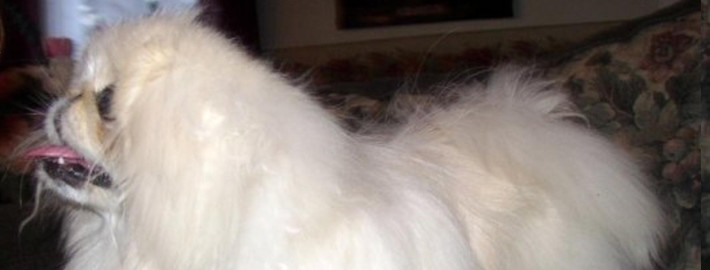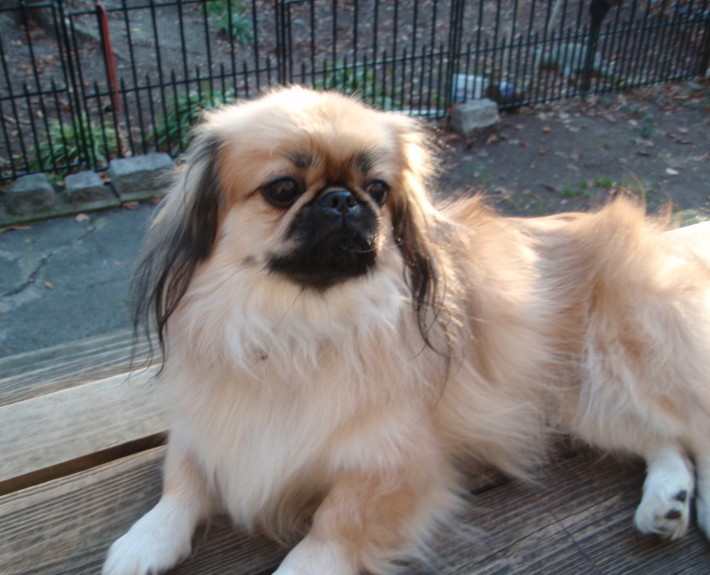What makes the Pekingese Unique?
The Pekingese is a compact dog with a pear-shaped body, heavy forequarters and lighter hindquarters. It is slightly longer than it is tall, with a stocky, heavy build. Its image is lionlike. It should imply courage, boldness and self-esteem rather than prettiness, daintiness or delicacy. Its gait is dignified and unhurried, with a slight roll resulting from its wider, heavier forequarters. It has a thick undercoat, and its outer coat is long, coarse and straight, and stands off. It forms a mane around the shoulders. The Pekingese must suggest its Chinese origins in its lionlike appearance, bold and direct character, and distinctive expression. The Pekingese is decidedly not a sissy lap dog. It is a courageous character that will not start a fight but will not back down from one either. It tends to be aloof around strangers. It is extremely devoted to its family, but it is independent and not overly demonstrative. Its stubbornness is legendary. Although playful around family members, it may not be athletic or playful enough to satisfy many children.
Page Contents
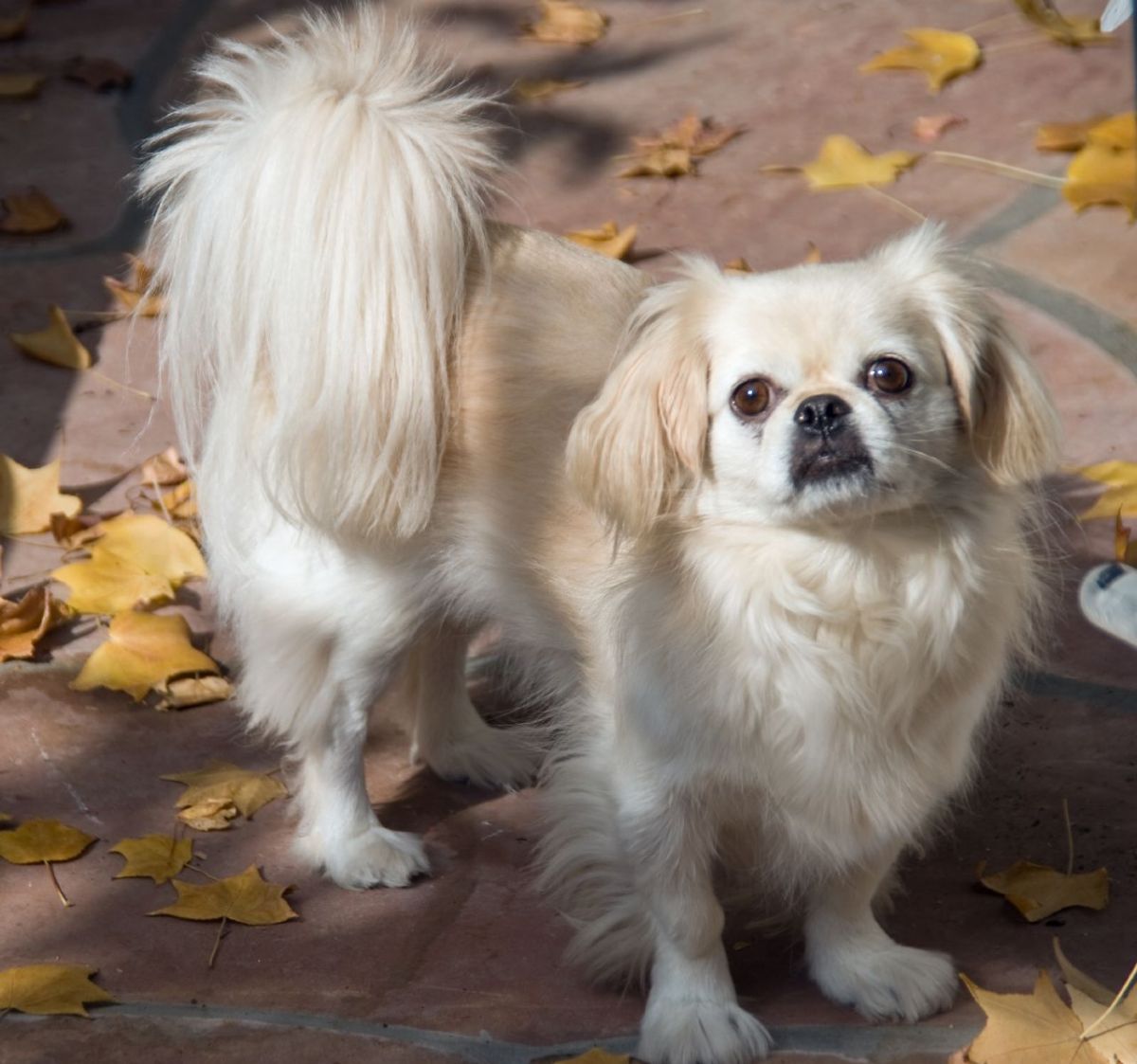
Is the Pekingese Right For You?
Pekingese possess a regal dignity, intelligence and self-importance, making them good natured, opinionated and affectionate family companions. Their small size makes them a good choice for apartment life, but they are sometimes difficult to housebreak. They are relatively inactive indoors and do not need a yard, but enjoy walks. Because of their long undercoats, Pekes need at least an hourly brushing session per week. If you are considering purchasing a Pekingese puppy, learn more. *Toy Group; AKC recognized in 1906.
*Weigh less than 14 pounds.
*Watchdog, canine companion.
In 5 Words
- Good-natured
- Agrressive
- Affectionate
- Stubborn
- Intelligent
Characteristics
Learn About the Pekingese
Description
The Pekingese is a small, well-balanced, compact dog. It has a stocky, muscular body that is slightly longer than it is tall. The head is large in proportion to the rest of the body, with the top of the head being massive, broad and flat. The front of the face is flat. The muzzle is broad and flat, thicker below the eyes, separating the upper and lower areas of the face. The skin on the muzzle is black. The black nose is broad and short. Teeth meet in an under bite with a broad jaw bone. The large, prominent, round eyes are set wide apart with black eye rims. The heart-shaped ears are set on the front corners of the top of the skull, lying flat against the head. They are well feathered so that they appear to blend with the head, giving it a rectangular look. The neck is short and thick. The legs are short, thick and heavy-boned. The tail is high-set, slightly arched and carried over the back. The outer coat is long and coarse in texture with profuse feathering. The undercoat is soft and thick. The coat comes in all colors, sometimes with a black mask.
Short History of the Pekingese
To learn of the Pekingese, you must first know of the legend of the lion and the marmoset. According to folklore, in order for the lion to wed his lady-love, he begged the patron saint of the animals, Ah Chu, to reduce him to the size of a pigmy, while still retaining his great lion heart and character. It is then said that the offspring of this union was the dog of Fu Lin, or the Lion Dog of China.
Traceable back to the Tang Dynasty of the 8th century, the Lion Dog, now referred to as the Pekingese, were bred by palace eunuchs and treated like royal members of the family — even having palace servants tend to their every need — until 1000 A.D. (The smaller Pekingese were known as sleeve dogs, as they could be taken around in the large sleeves of their Chinese owners.)
Pekingese breeding continued during the Tao Kuang period (1821-1851), after which British looters plundered the imperial summer palace in 1860, bringing with them five royal Lion Dogs to England.
One of these Pekingese dogs was gifted to Queen Victoria, thereby increasing the demand for the breed and insuring its place in British society. For several decades, ownership of a Pekingese dog was a sign of privilege and wealth. The American Kennel Club registered the Pekingese in 1906. Today, its popularity has neither waned nor faltered, remaining an excellent choice for show dog fancier and purebred connoisseurs alike..
Temperament
The Pekingese is a stubborn, head-strong dog. It does not take well to training. Pekingese puppies do not like to be taught things or to be expected to obey commands. They can be rather independent and even ignore its owner when called. Pekingese dogs carry themselves proudly and even have a look written on their faces which says, “You can’t tell me what to do.” They can be aggressive towards other dogs and are happiest in a home where they are the only dog. Life in the palaces of China where they were highly regarded and respected probably suited their personality very much. Living with a family of four children, one other dog and two cats would not be as thrilling to them. Pekingese can be difficult to control which would not make them suitable to a first time dog owner. Like the other small breeds in the toy category, they can also be jealous of children. Pekingese puppies are not suitable dogs for a young child.
Caring for Your Pekingese
General Health
The Pekingese has a median lifespan of 11.4 years in a UK Kennel Club survey.
The leading cause of death for Pekingese, as for many other Toy breeds, is trauma. [1] Top leading causes of organ systems include neurologic and cardiovascular [2], e.g., congestive heart failure. When diagnosed early and successfully treated with medication, a Peke with this problem can expect to live many years. A heart murmur is a potential sign of a problem, and must be evaluated by a veterinary cardiologist. Very often, the problem does not surface until the dog is 6 or more years old, so it is very difficult to screen the problem in a pup.
The other main problems of the breed are eye issues and breathing problems, resulting from its tiny skull and flattened face(see Brachycephalic syndrome), and skin allergies (and hotspots). An especially common problem is eye ulcers, which may develop spontaneously. Some other eye problems that Pekingese can suffer from are Keratoconjunctivitis Sicca (Dry Eye) and Progressive Retinal Atrophy (PRA).
The Pekingese should not be kept outside, as having flattened faces and noses can cause them to develop breathing problems, making it difficult for them to regulate their body temperature in overly hot or cold weather. Their long backs, relative to their legs, make them vulnerable to back injuries. Care should be taken when picking them up to give adequate support to the back: one hand under the chest, the other under the abdomen. Short legs give some Pekingese difficulty with stairs; older dogs may not be able to go up or down stairs alone.
In an effort to address the breathing difficulties caused by the breed’s flat face, the Kennel Club (UK) significantly changed the breed standard in October 2008, removing the clause that the “profile [should be] flat with nose well up between eyes” and adding instead that the “muzzle must be evident”.[4] This was in response to public opinion following the BBC programme, Pedigree Dogs Exposed. The breed standards of two other flat-faced breeds, the Pug and English Bulldog, were soon also changed.
Grooming & Bathing
The Pekingese is high-maintenance in the grooming department. The coat needs to be brushed regularly with a small bristle brush, but the coat should be sprayed with water or a conditioning spray before brushing so that the hair does not break. The hair must be brushed all the way to the skin in order to remove dead hair, otherwise tangles and mats will form. A metal comb should be used on the areas of the dog that are fringed, as they are the most prone to tangles. The hair on the feet should be trimmed in order to prevent the dog from getting foreign objects stuck in in the feet and also to prevent mats from forming there. Pekingese should be bathed once or twice per month, and a dry dog shampoo can be used in between baths to help keep the coat clean and healthy.
The ears should be checked on a regular basis for signs of wax buildup, irritation or infection. Clean them with a cotton ball and a veterinarian-approved cleanser; never use a cotton swab in a dog’s ear canal. Small dogs are prone to dental problems, so teeth should be brushed on a weekly basis to prevent tartar buildup, promote gum health and keep bad breath at bay. Trim nails monthly if the dog does not wear the toenails down naturally outdoors.
Exercise & Training
Pekingese need a daily walk, where the dog is made to heel beside or behind the person holding the lead, as instinct tells a dog the leader leads the way, and that leader needs to be the human. Play will take care of a lot of their exercise needs, however, as with all breeds, play will not fulfill their primal instinct to walk. Dogs that do not get to go on daily walks are more likely to display behavior problems. They will also enjoy a good romp in a safe, open area off lead, such as a large, fenced-in yard. Get your Peke accustomed to the leash when it is still a puppy. Some owners have told me their Pekes will walk up to 4 miles on a nightly walk. A Pekingese considers itself to be its own boss (if not the king of the house), but it can be trained through positive reinforcement. Patience is required when training the Pekingese.

